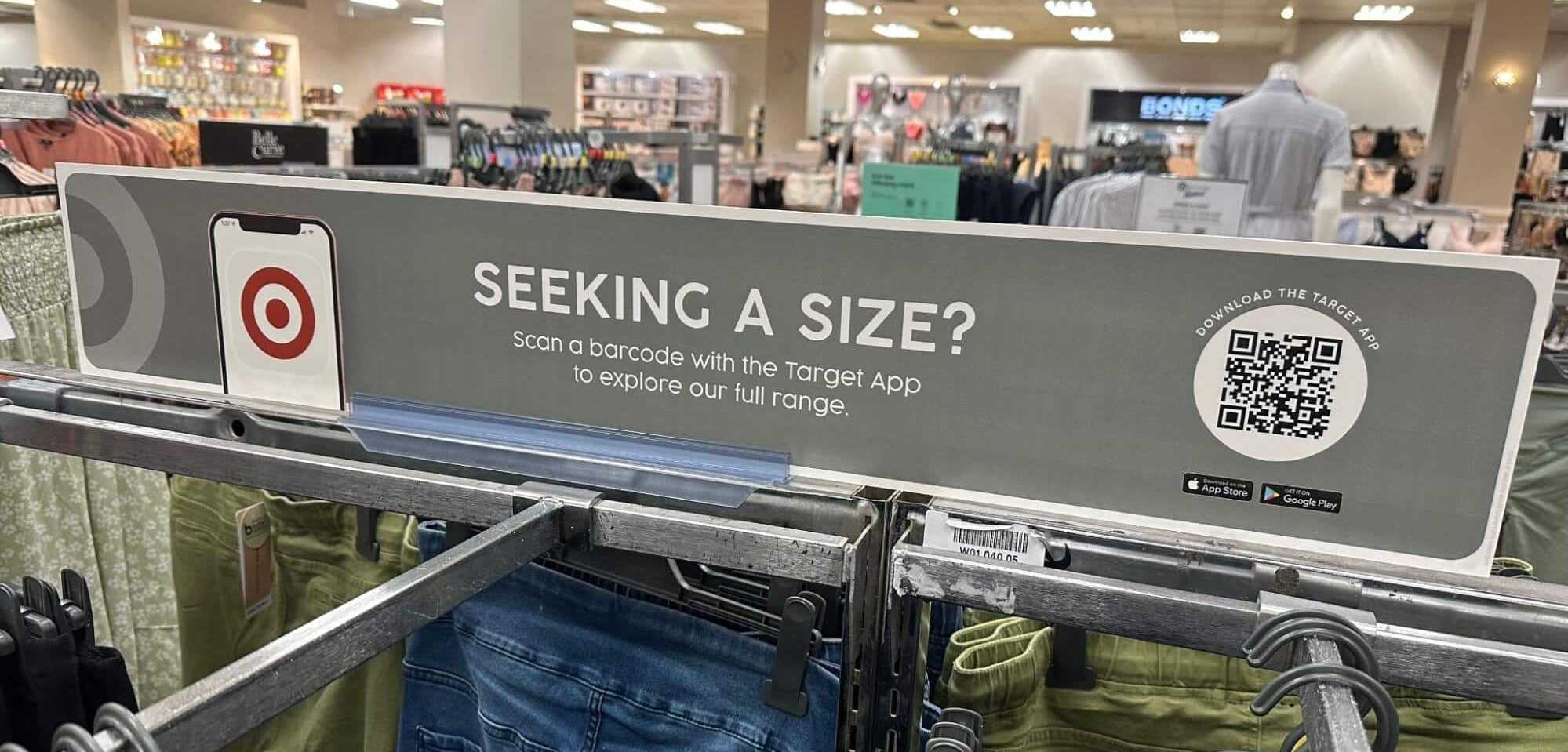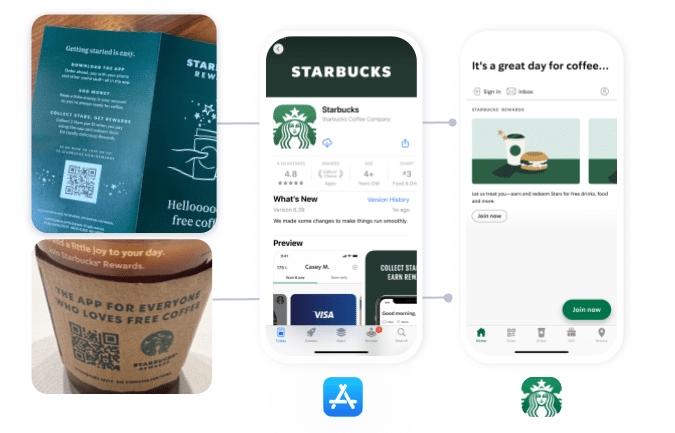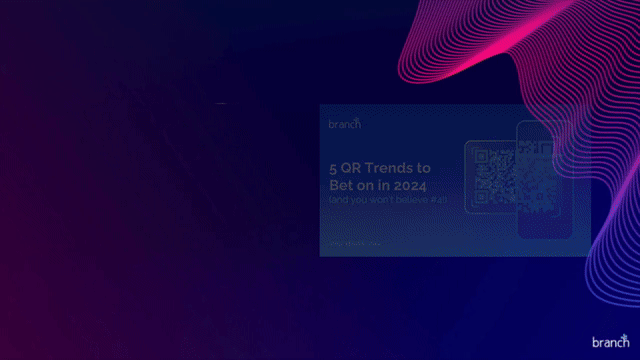Another Mobile Apps Unlocked (MAU) event has come and gone! Like years prior, it was a hub of innovation, industry insights, and spirited discussions. The Branch team was well represented in Las Vegas, where we had the opportunity to engage with other industry experts, hear first-hand about the challenges facing mobile leaders, and share our expertise.
In this blog, we’ll take a closer look at the key insights from our presentation and delve into the latest developments and regulations that are reshaping the way brands engage with their audiences. For a deeper dive, check out our 2024 MAU Highlights webinar.
QR code trends to watch
During Branch’s presentation, our Head of Business Strategy, Reed Kuhn, delved into five QR code trends that are reshaping the digital marketing sphere. Once dismissed as a relic of the past, QR codes are experiencing a renaissance thanks to their newfound customizability, versatility, and seamless integration into modern marketing strategies. Here’s what you can expect from QR codes in 2024 and beyond:
1. QR codes will start looking better.
Aesthetics matter more than ever. Gone are the days of clunky, unattractive QR designs. Brands are increasingly leveraging design elements to make their QR codes more trustworthy and visually appealing. By incorporating vibrant colors, sleek designs, and branding elements such as logos, QR codes become visually engaging, capturing the attention of users and enhancing brand perception. Usability and convenience matter too: Shortening links allows users to scan QR codes from farther away. Brands like KFC and Credit Karma have already embraced this trend.
2. QR codes will deep link to high-intent features.
Rather than simply directing users to a generic landing page, QR codes now serve as gateways to high-intent features within mobile apps. For example, Target Australia utilizes QR codes to deep link users directly to its personal sizing feature, enhancing customers’ in-store shopping experience with a single scan. Remember, every step removed from the user’s path to conversion decreases the likelihood of dropoff.
3. Full-funnel attribution will measure the value of QR campaigns.
In the past, measuring QR code campaign effectiveness posed challenges. Today, brands can enhance tracking by replacing static QR codes with dynamic, mobile-optimized ones that utilize deep links. This enables companies like Starbucks to track campaign impact across the entire customer journey and attribute conversions to specific QR code scans. Full-funnel attribution will become the norm in 2024 and beyond, enabling brands to determine the exact value generated at each touchpoint.
4. You will see a LOT more desktop QR codes.
Get ready for a surge in desktop QR codes as brands increasingly utilize them to enhance user experiences and bridge the gap between desktop and mobile. While static QR codes have proven effective, triggered or user-prompted codes yield even better conversion rates by presenting users with contextually relevant calls-to-action during high-intent moments. For example, top brands implement post-purchase desktop QR codes to convert first-time buyers into loyal customers, seamlessly transitioning online transactions into ongoing engagement opportunities.
5. You will see more QR codes everywhere.
QR codes will become even more ubiquitous. Expect to see QR codes seamlessly woven into brand campaigns — on physical signage, packaging, direct mail, in-store displays, and more. Wine.com, for example, has pioneered the use of QR stickers on every bottle of wine sold, inviting consumers to engage with featured content and promotions. The key to harnessing the power of QR codes lies in their widespread utilization, coupled with robust measurement and optimization strategies. By deploying QR codes across diverse touchpoints, measuring their effectiveness, and iteratively optimizing over time, brands can maximize their impact and drive meaningful engagement with their audience.
Watch the whole QR code presentation from mau
Other themes from the conference floor
The future of measurement: Google’s Privacy Sandbox, full-funnel attribution, and beyond
Our discussions with industry leaders encompassed a range of topics shaping the future of mobile marketing. One standout subject was Google’s Privacy Sandbox. Industry insiders seem to finally be taking this initiative seriously, although opinions vary on its feasibility, implications, and realistic timeline. Rumors suggest it could roll out 12 months after GAID deprecation, though there are ongoing debates about potential delays and regulatory challenges.
“Google’s Privacy Sandbox is starting to get real. While the predictive timeline of ‘about 12 months after cookie deprecation’ is popular with the mobile app folks, the convergence of web and app attribution under GPS is an interesting paradigm shift, challenging companies to rethink their strategies and embrace a unified measurement approach between web and mobile.”
— Adam Landis, Head of Growth
We also heard buzz about the concept of full-funnel attribution — music to our ears! Mobile leaders are all about getting a complete picture of campaign effectiveness and aligning multiple sources of data for a holistic view of their marketing performance. There’s a clear and growing emphasis on data-driven decision making, highlighting the need for robust measurement solutions to accurately assess marketing ROI across channels. This becomes particularly complex when bridging the online world with offline interactions. Marketers are actively looking for solutions to connect the dots between digital marketing investments and offline purchases or activations.
Organic traffic is still undervalued and underutilized
Brands continue to grapple with the same obstacle they faced five years ago: low app adoption rates. In a rush to tackle complex measurement challenges and navigate regulatory hurdles, many overlook a simple yet extremely valuable asset: their owned traffic. Channels like email, social media, web, and desktop are prime pathways for conversion, yet their potential is largely untapped.
“The missed opportunity around owned traffic is widespread. Mobile leaders — even at massive, digitally mature brands — are so focused on keeping up with complex and rapidly evolving measurement trends, they’re leaving money on the table with basic best practices. It’s a valuable reminder to refocus on the fundamentals of app marketing strategies and optimize owned traffic channels.”
— Reed Kuhn, Head of Business Strategy
As always, MAU provided an invaluable forum for discussions and insights sharing. If you missed the chance to connect with us at the event, don’t hesitate to reach out to the Branch team. And for more highlights and key takeaways, tune in to our on-demand MAU recap.









